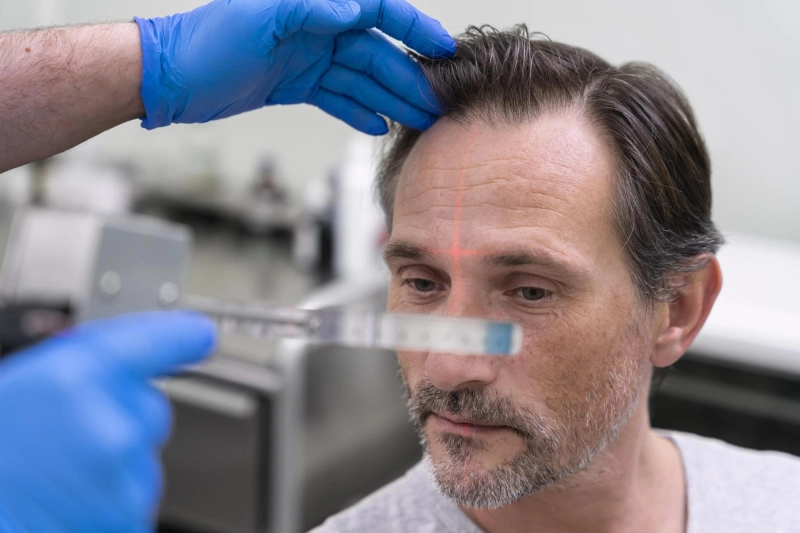Testosterone is a crucial hormone that affects various aspects of the body, including hair growth and loss. While it is commonly associated with masculinity, testosterone plays a role in both men and women’s hair health. Understanding its impact can help individuals make informed decisions regarding hair loss treatments, including Hair Transplant UK and FUT Hair Transplant procedures.
The Role of Testosterone in Hair Growth
Testosterone contributes to hair growth in multiple ways. It influences the development of body and facial hair during puberty and maintains the density of scalp hair. However, its byproduct, dihydrotestosterone (DHT), plays a more significant role in determining hair loss.
DHT: The Double-Edged Sword
DHT is an androgen derived from testosterone through the action of the enzyme 5-alpha reductase. While it is essential for male development, it is also responsible for pattern baldness.
- DHT binds to hair follicles, causing them to shrink (miniaturization)
- Shrinking follicles result in thinner and weaker hair
- Over time, follicles stop producing hair altogether
Individuals with a genetic predisposition are more sensitive to DHT, leading to male and female pattern baldness.
How Testosterone Contributes to Hair Loss?
Despite its role in hair growth, testosterone can also contribute to hair loss due to the following factors:
- Genetic Sensitivity to DHT
- Some individuals inherit hair follicles that are overly sensitive to DHT.
- This leads to progressive hair thinning and baldness.
- Hormonal Imbalances
- High testosterone levels can increase DHT production, accelerating hair loss.
- Low testosterone can also impact hair health by reducing overall hair growth.
- Aging and Lifestyle Factors
- As individuals age, testosterone levels fluctuate, influencing hair density.
- Poor diet, stress, and lifestyle choices can exacerbate hair thinning.
Effective Solutions for Hair Loss
While hair loss due to testosterone and DHT can be distressing, various treatments can help restore hair. Some of the most effective solutions include FUT Hair Transplant techniques.
1. FUT Hair Transplant: A Permanent Solution
Follicular Unit Transplantation (FUT) is a popular hair restoration technique that provides long-lasting results.
How FUT Works:
- A strip of hair-bearing skin is removed from the back of the scalp
- Hair follicles are extracted and implanted into the balding areas
- The donor site is sutured and heals with minimal scarring
Benefits of FUT Hair Transplant:
- High graft survival rate
- Natural-looking results
- Cost-effective compared to other methods
2. Hair Transplant UK: Advanced Hair Restoration
Many clinics in the Hair Transplant UK network offer advanced procedures tailored to individual needs. These treatments include:
- FUE (Follicular Unit Extraction): A minimally invasive technique that extracts individual follicles.
- PRP Therapy (Platelet-Rich Plasma): Uses the patient’s plasma to stimulate hair growth.
- Scalp Micropigmentation: A non-surgical method to create the appearance of fuller hair.
Other Treatment Options for Hair Loss
Aside from transplants, other medical and lifestyle solutions can help combat hair loss:
1. Medications
- Finasteride: Reduces DHT levels to slow hair loss.
- Minoxidil: A topical solution that stimulates hair follicles.
2. Lifestyle Modifications
- Healthy Diet: A balanced diet rich in vitamins and proteins supports hair growth.
- Stress Management: Reducing stress through meditation and exercise can prevent excessive hair shedding.
- Proper Hair Care: Avoiding harsh chemicals and excessive heat styling can help maintain healthy hair.
Conclusion
Testosterone and its byproduct, DHT, play significant roles in hair growth and loss. While genetic predisposition and hormonal imbalances can contribute to hair thinning, effective treatments From Hair Transplant UK offer promising solutions. Whether through surgical procedures, medications, or lifestyle adjustments, understanding the impact of testosterone on hair can help individuals take proactive steps toward hair restoration and overall confidence.


